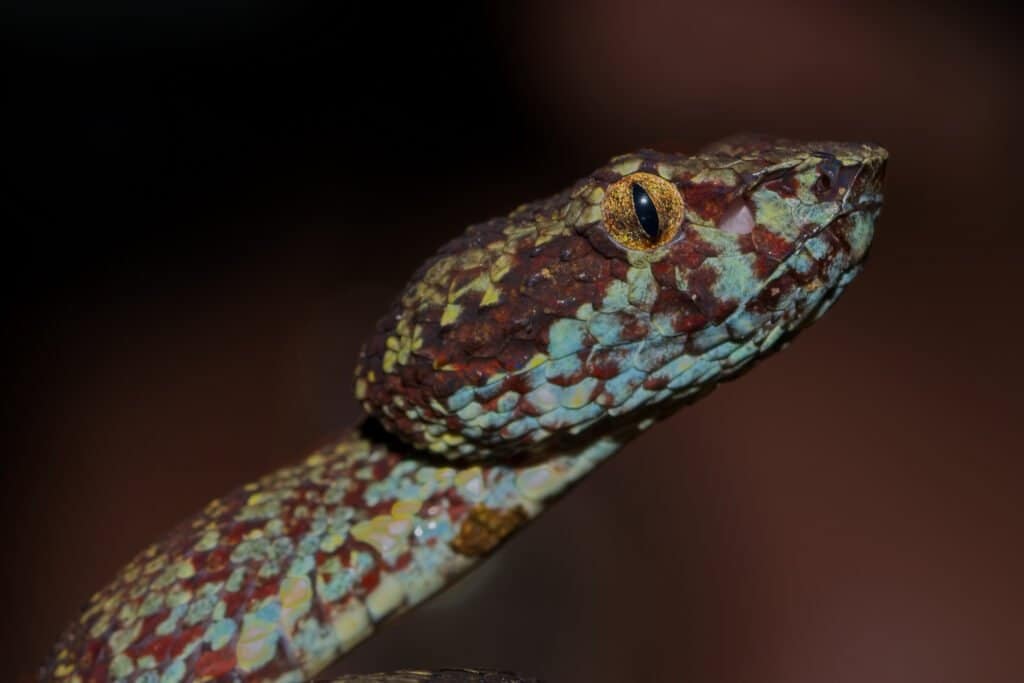Introduction
Australia is renowned for its abundant biodiversity, especially when it involves reptiles. Amongst these fascinating animals, the Eastern Tiger Snake ( Notechis scutatus) attracts attention because of its striking appearance and powerful poison. Discovered primarily in southeastern Australia, this species has intrigued both herpetologists and laid-back viewers alike. In this thorough overview, we will delve into the attributes of the Eastern Tiger Snake, explore their habitat, actions, and diet, and share essential safety and security ideas for any individual who might encounter them.
As we traverse with the subtleties of the Eastern Tiger Serpent's life, we'll likewise review critical subjects such as snake bite emergency treatment and prevention methods. With serpent bites being a significant problem in Australia, furnishing on your own with expertise can imply the difference between safety and threat. Buckle Australian snake distribution up as we start this informing journey.
Exploring the Eastern Tiger Snake: Features and Safety And Security Tips
1. Review of the Eastern Tiger Snake
The Eastern Tiger Snake is a highly poisonous serpent that comes from the Elapidae family members. Defined by its distinct banding pattern that looks like a tiger's stripes, this varieties showcases a variety of colors from olive-green to black or even brown hues.
1.1 Physical Characteristics
Tiger snakes are tool to large-sized serpents that usually get to lengths of 1.2 to 2 meters (4 to 6.5 feet). Their durable bodies are enhanced by a squashed head that makes them conveniently identifiable among other snakes.
1.2 Poison Composition
The poison of an Eastern Tiger Snake is primarily neurotoxic. This suggests it can influence the nerve system and result in paralysis if left unattended. The good news is, antivenom is available in Australia for those regrettable adequate to be bitten.
2. Environment of the Eastern Tiger Snake
Understanding where these snakes grow can assist in staying clear of encounters and valuing their duty in the ecosystem.
2.1 All-natural Habitat
Eastern Tiger Snakes prefer seaside regions, wetland areas, and meadows. They are frequently found near freshwater sources like swamps and rivers.
2.2 Geographical Distribution
This species is mostly situated in southeastern Australia, consisting of parts of Tasmania where they are usually referred to as Tasmanian tiger snakes.
3. Actions Patterns
3.1 Diurnal vs Nighttime Activity
While some tiger snakes might show nocturnal habits during warmer months, they are mostly diurnal animals that search during daytime hours.

3.2 Defensive Mechanisms
When intimidated, tiger snakes might present hostile habits by curling back or hissing noisally prior to striking if provoked further.
4. Diet of the Eastern Tiger Snake
Tiger snakes have a varied diet plan largely containing small creatures, birds, amphibians, and various other reptiles.
4.1 Hunting Techniques
They use ambush strategies coupled with rapid strikes to capture innocent prey-- an impressive feat provided their size!
5. Are Tiger Snakes Venomous? Recognizing Their Danger Level
Yes! The eastern tiger snake is certainly venomous; however, not all attacks cause envenomation (the shot of poison). Recognition about their danger level is essential for any individual who frequents their habitat.
6. Emergency Treatment for Snake Bites: An Essential Skillset
If somebody is attacked by a tiger serpent or any kind of various other species:
- Remain calm; panic aggravates symptoms. Call emergency solutions immediately. Apply a pressure bandage above the bite site.
Knowing how to react immediately can save lives!
7. Usual Myths About Tiger Snakes Debunked
Misunderstandings about tiger serpents are plentiful-- allow's Click for more info address some usual misconceptions:

- Myth: All serpents are aggressive. Fact: Several snake types favor avoidance over confrontation. Myth: A dry bite means no danger. Fact: Always seek clinical attention despite symptoms!
8. Safety And Security Preventative Measures When Running Into Snakes
Awareness is your ideal protection against unwanted encounters with tiger snakes:
- Stay vigilant while treking or going through known habitats. Avoid tall turf where exposure might be limited. Wear ideal footwear when exploring natural areas.
9. What To Do If You Encounter an Eastern Tiger Snake?
Stay tranquility! Slowly back away without making unexpected activities-- it's essential not to provoke the animal further.
10. Infant Tiger Snakes: The Children' Journey
Juvenile tigers normally display different coloration than grownups however preserve similar patterns that provide camouflage versus predators and ecological threats.
10.1 Developing Stages
These child snakes arise after regarding 2 months' pregnancy from eggs laid by ladies-- an interesting transition right into independence!
11. The Duty of Conservation in Protecting Snake Species
With city advancement trespassing upon natural habitats, preservation efforts are vital for maintaining healthy populaces of eastern tiger snakes-- and all wildlife!
Frequently Asked Questions
FAQ 1: Are all tiger snakes deadly?
While eastern tiger snakes have potent venom efficient in causing severe harm or fatality if neglected, not every encounter causes a bite or envenomation.
FAQ 2: Exactly how can I identify an eastern tiger snake?
Look for distinct red stripe patterns incorporated with coloration ranging from olive-green to keelback snake black; they also have level heads particular of elapids!
FAQ 3: What must I consist of in my serpent bite emergency treatment kit?
Essential products include pressure bandages, sterilized gauze pads for wound care, antibacterial wipes/solutions like alcohol swabs in addition to emergency situation contact numbers!
FAQ 4: How often do tiger serpents breed?
Typically breeding takes place throughout spring when temperature levels increase-- ladies might lay in between 20-30 eggs per clutch depending upon environmental conditions!

FAQ 5: What makes Tasmania's tiger snake unique?
Tasmanian tigers have a tendency towards larger sizes compared to mainland counterparts; their shade variations vary extensively across various geographical areas too!
FAQ 6: Can you safely transfer a snake found on your property?
It's suggested not to attempt self-relocation as incorrect handling might prompt them-- get in touch with neighborhood wild animals authorities instead for assistance!
Conclusion
In summary, discovering the eastern tiger snake discloses much regarding one of Australia's many captivating reptiles-- from its striking physical functions to its crucial role within environments along with widespread security considerations pertaining to possible encounters with humans! Understanding regarding this species cultivates regard while making sure safe experiences ought to one cross courses with these splendid creatures out in nature-- since understanding really equips us all!